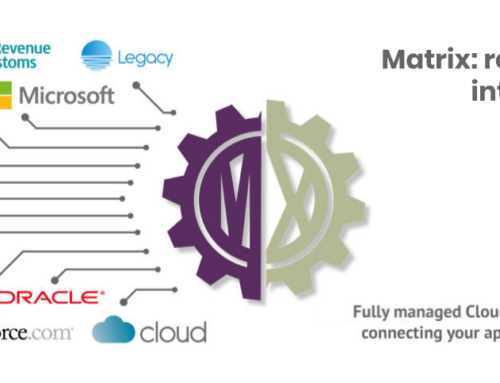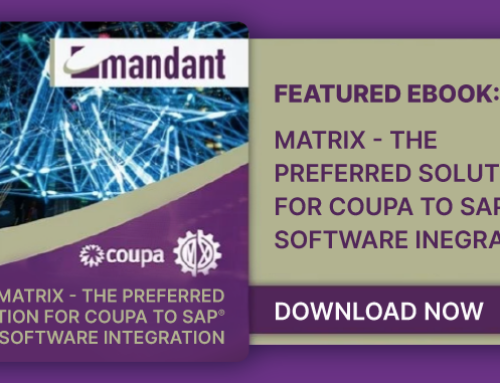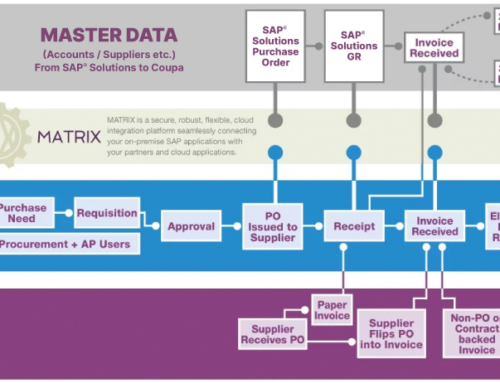Evolution of Data Integration
In the fast-paced world of IT and Procurement, efficient data control is a critical factor if you want to maintain a competitive business edge. The evolution of integration has transformed the way organisations manage their dataflow, enabling smoother operations and informed decision-making.
Integration, or the management of data in motion, used to be easy. If you had two systems holding different types or formats of related data you might have found you needed to send data or replicate from one system to the other. To do so, you simply built a point-to-point interface, from one system to the other, to transfer exactly the data required in a suitable format. This was fine and often got the job done pretty quickly. Unfortunately, organisations found themselves building almost the same data feed between the source system and different target systems. Subsets of the data would flow along separate interfaces as part of an ETL (extract, transform and load) process feeding different systems. The result – spaghetti.
Systems would become components in multiple, similar interface-based processes that would change over time and become obsolete. Functional changes or major fixes required changes to multiple interfaces, often carrying very similar sets of data. The number of dependencies introduced significant complexities to the maintenance process. Of course, interface components would all have been named inconsistently, with wildly varying data definitions, duplication and redundancy. Making changes required the unpicking of many layers of information built at different times to different standards. Workarounds would be added over time to avoid the risk of costly and time-consuming change projects applied to critical applications. No wonder it took so long to implement new systems.
The Y2K Revelation: From Crisis to Opportunity
The Y2K IT problem has often been underplayed, though it posed a serious risk to organisations, governments and companies worldwide. Addressing the risk required detailed examination of the underlying complexities and inefficiencies within IT systems. As dedicated teams of IT analysts meticulously unraveled millions of system designs, a silver lining emerged – a newfound understanding of the architecture of applications organisations relied on so heavily. It also demonstrated a pressing need for strategic change.
Systems could be redesigned now their architectures were understood. New functionality that organisations had wanted for years were now within grasp. One of the clear enablers of this change bonanza was a different approach to moving data around. IT designers wanted to make sure data was accurate, well described and moved efficiently – which meant moving it once, not multiple times. The old approach of building new interfaces every time a new requirement appeared was seen to be inefficient, costly and hard to maintain. Reusable integration mechanisms came to market that ensured that new interfaces were not needed every time there was a change in operational processes. The organisation could just call the data they needed from wherever it was being stored. These game-changing tools became known as middleware.
Benefits of integration solutions
The integration solutions that allowed easier access to data stored in endpoint systems ushered in a new approach to ERP implementation. Now it is so much simpler to remove one system endpoint and replace it with a new, richer application that better suits the organisation as it is today. This is because not all the data integration pathways have to be thrown away and replaced. Middleware allowed organisations to build their own integration pathways much more easily, making them supportable and transparent. A consistent approach to monitoring and error handling processes make sure the organisation has access to data that helps them to keep everything running smoothly and gives them richer information to aid business decisions.
Evolution of ERP accelerators – the turning point
Integration tools that allow organisations to build their own data transfer pathways provide the building blocks, but you need to invest in teams who can work with the business to understand requirements and then design and build the data calls from scratch. The turning point has been the development of ERP acceleration tools that provide, as standard, configurable, pre-built processes that satisfy the majority of business processes and interactions required when integrating to an ERP system. This means the requirement is limited to configure and, in some cases, enhance the standard data calls. This allows them to be switched on quickly as the ERP implementation rolls out, without all the demands of building code and processes from scratch.
If middleware offered a leap forward, the introduction of ERP accelerators marks a turning point and a real game-changer. Mandant’s MATRIX engine provides a state-of-the art platform to underpin a suite of fully managed accelerators.
MATRIX is an IPaaS, but that is not the full story. It is also a fully managed integration service, implemented and supported by Mandant integration experts. You don’t need to worry about changes, support and day-to-day maintenance – it is all handled for you.
MATRIX – the CoupaLink ERP accelerator that handles it for you
Mandant’s SAP ERP accelerator has been designed and built to provide Coupa BSM with the capabilities required to link to SAP ERP systems and provide business benefit process by process as the implementation programme progresses. The processes, dataflows and connections between Coupa and SAP are regularised, complete and fully proven. You don’t have to build any dataflows before starting to deliver real-time integration. This could be supplier integration or process flows such as P2P or P2O. As Coupa delivers new functionality so does MATRIX, ensuring fully managed and guaranteed delivery of the right data to the business systems supporting the business processes.
Mandant’s SAP ERP Accelerator is a CoupaLink solution offering out-of-the-box integration that is easy and fast to implement.
Mandant and data integration excellence
Mandant have been delivering data integration excellence to clients for 25 years. They are trusted partners of major software corporations Coupa and SAP. These partnerships demonstrate confidence in Mandant’s ability to get it right every time.
Mandant work with you, providing solutions to fit your unique profile. They fully engage, making sure they understand your landscape. They have effective, tried-and-tested processes that make your change programmes run smoothly, with Mandant at your side.
Mandant are data-integration and Coupa ERP acceleration experts who pride themselves on their expertise. Not just an implementation company, they are also a full-cycle supplier offering a managed service that grows with you. They have effective processes covering all phases of your change programme. They are experienced ERP accelerators who can help deliver your project fast.
Their track record speaks for itself. Their experts can communicate key messages at all levels. They have industry-beating technical tools and are passionate about researching better ways to do things. Mandant is dedicated to the evolution of top-class integration to enable clients to achieve their goals.
Contact us
To find out how we can help you deliver and manage effective, robust and accurate data to your systems.
Mandant have 25 years’ experience of delivering integration solutions to satisfied clients. Find out today how they can help you manage difficult change.
Find out more about how Mandant can solve your integration challenges and help accelerate your Coupa, SAP ERP or other integration project. Visit www.mandant.net or email info@mandant.net
Mandant’s ERP accelerator for Coupa, MATRIX, is listed on the Coupa App Marketplace
Share on LinkedIn









